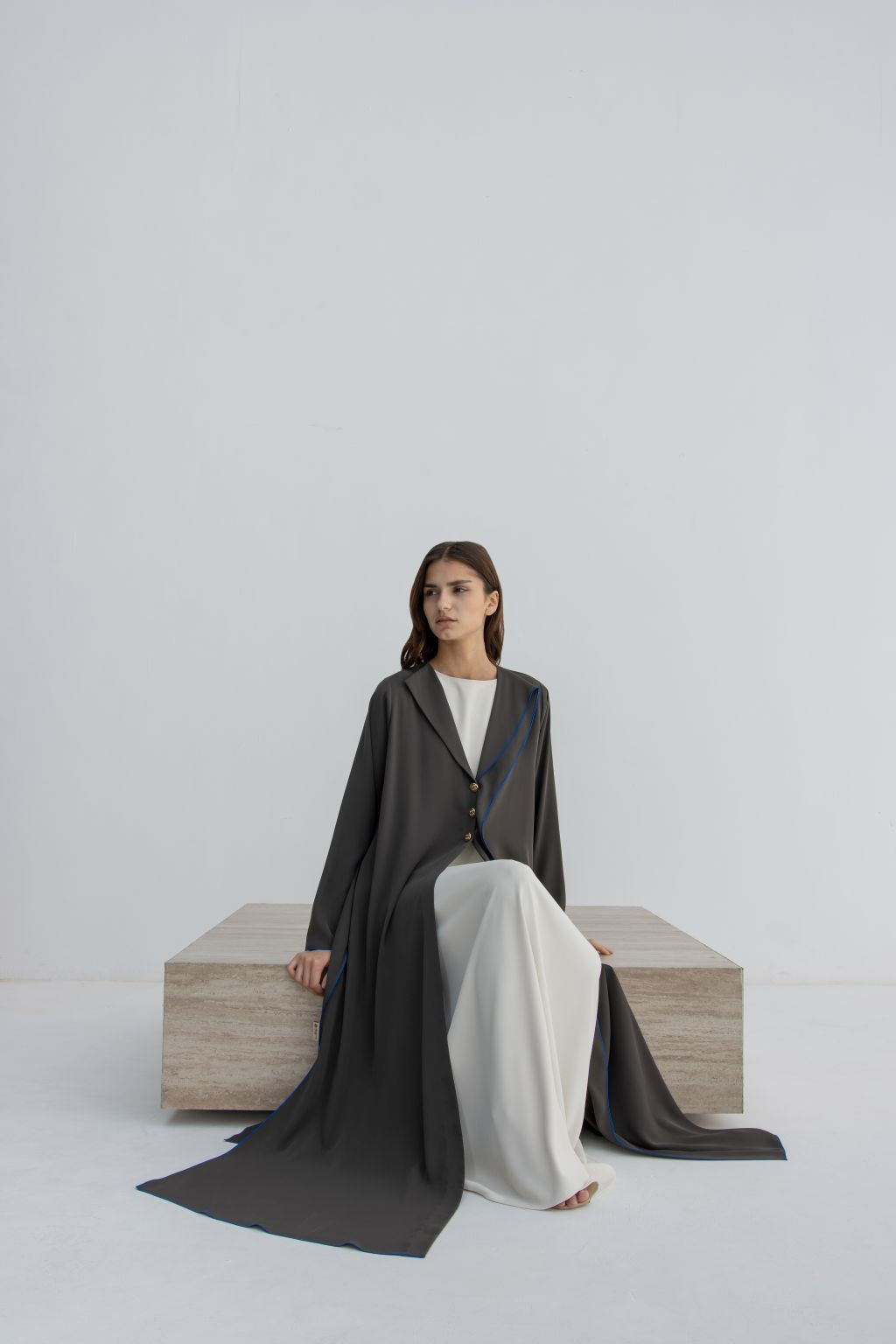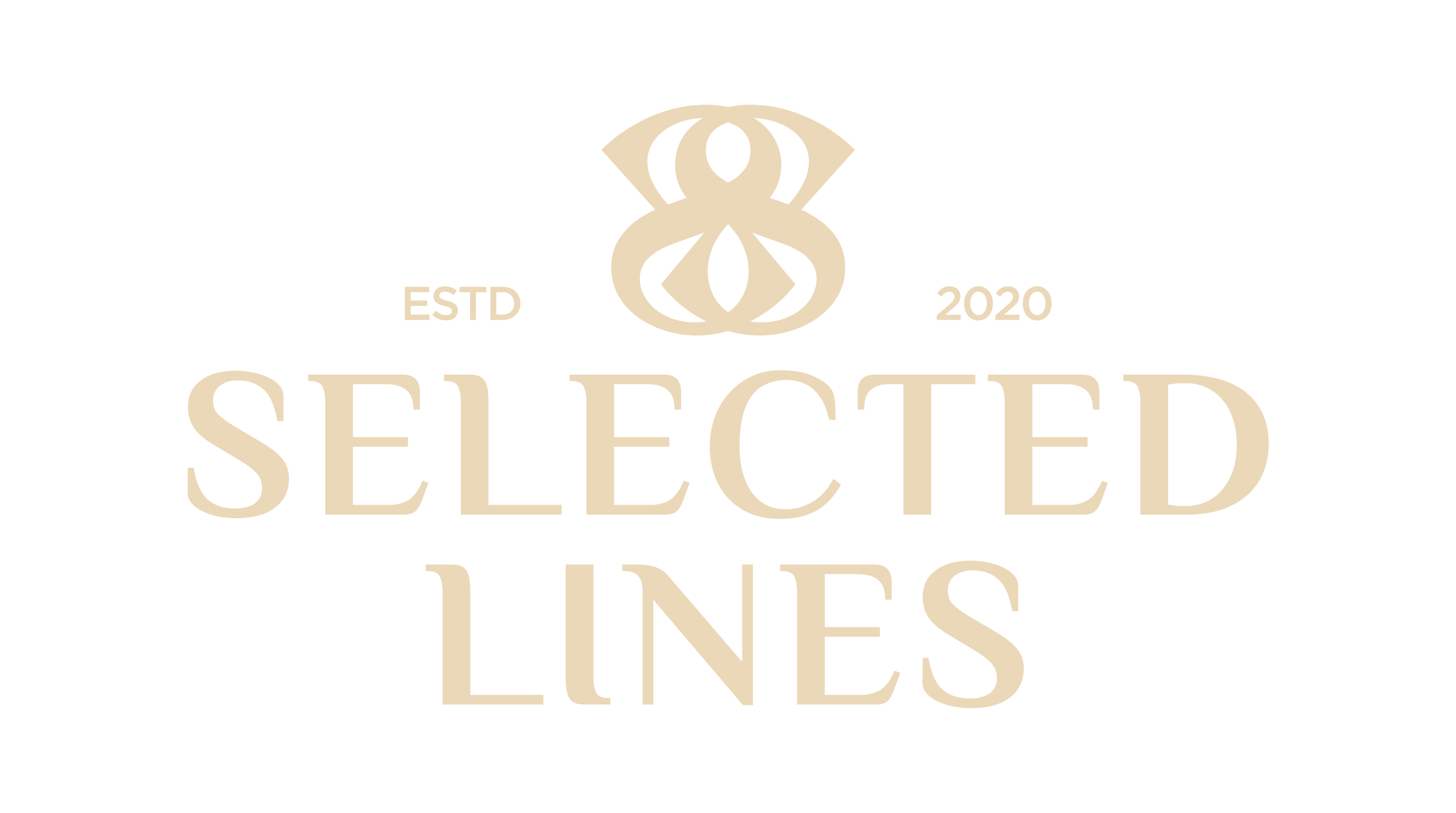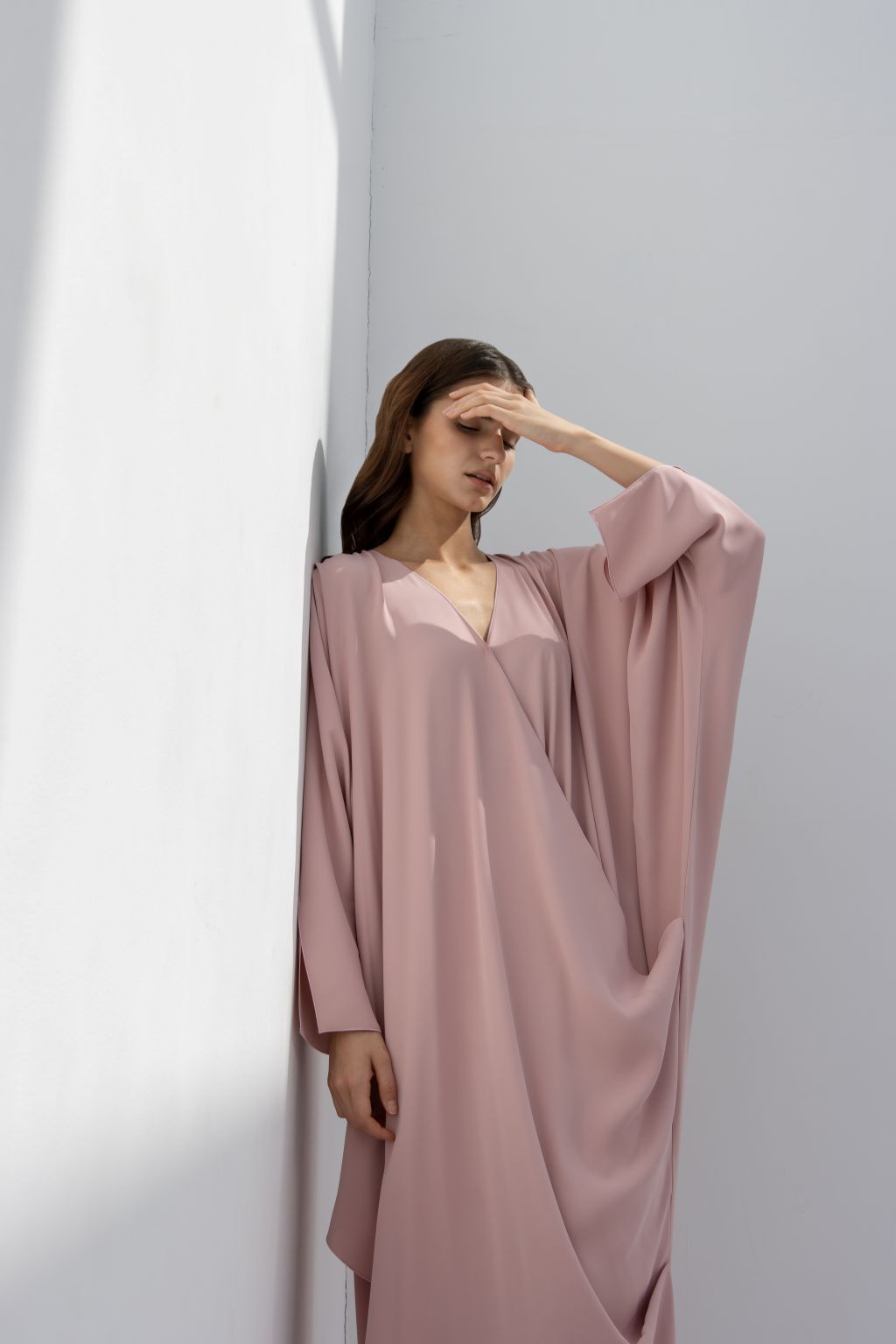المقال: The Role of Traditional Attire in UAE's Cultural Identity

The Role of Traditional Attire in UAE's Cultural Identity
Traditional Emirati Attire: A Cultural Overview
The United Arab Emirates is a nation rich in cultural heritage. A key aspect of this heritage is the traditional Emirati attire.
This attire is not just clothing. It's a reflection of the UAE's history, environment, and values.
For men, the 'Kandura' or 'Dishdasha' is a common sight. This long white robe is both elegant and practical for the hot climate.
Women traditionally wear an 'Abaya', a black flowing cloak. Paired with a 'Sheila' or headscarf, it embodies modesty and grace.
In this article, we delve into the cultural significance of these garments. We explore the various elements that make up the national dress for both men and women in the UAE.
Join us on this journey as we unravel the story behind the UAE's traditional attire.
The Essence of Emirati National Dress
Emirati national dress symbolizes pride and identity. It's deeply rooted in tradition and reflects the country's values. The attire serves practical purposes, offering protection from the harsh desert climate. Its design is adapted to suit the hot weather, allowing freedom of movement and comfort.
The clothing is not only practical but also elegant. It incorporates Islamic principles of modesty. This is important in a culture where clothing reflects personal integrity. Men and women alike wear attire that covers the body, demonstrating respect for traditional customs.
Beyond its functionality and modesty, traditional Emirati attire showcases intricate craftsmanship. Clothes often feature detailed embroidery and fine fabrics. These elements highlight the artistic skills that have been handed down through generations.
Wearing the national dress is more than a fashion statement. It is an expression of cultural heritage that unites Emiratis. This attire fosters a sense of community and belonging, symbolizing the rich tapestry of the UAE.
The Kandura: UAE National Dress for Men
The Kandura is an iconic garment in Emirati culture. It's a long, flowing white robe worn by men. Its simplicity belies its significance as a symbol of national identity. It embodies elegance while being perfectly suited to the desert climate. The Kandura is often made from cotton or polyester, chosen for their breathability.
This traditional attire is primarily white, although subtle color variations do exist. The color reflects sunlight, keeping the wearer cool. In some regions, you'll find Kanduras in shades of brown or beige. These variations highlight cultural diversity within the UAE.
The design of the Kandura is functional yet stylish. It covers the body from neck to ankles, preserving modesty. The garment often includes pockets, adding a practical element to the traditional aesthetic. This balance of form and function is key to its enduring appeal.
Men wear the Kandura daily and also for special occasions. During celebrations or formal events, its significance is magnified. A freshly pressed Kandura is a mark of respect and showcases attention to detail. This garment is not just fabric; it's a stitched expression of heritage.
Overall, the Kandura remains a cherished emblem of Emirati tradition. Its timeless design continues to adapt, meeting modern demands without losing its roots. This piece of clothing tells the story of the UAE's past and present, one thread at a time.
The Ghutra and Agal: Symbols of Emirati Identity
The Ghutra is another staple of Emirati men's attire. It's a square headscarf worn for both practical and cultural reasons. This headwear shields the head and neck from the sun's harsh rays. Made from cotton, it offers comfort and protection.
Usually, the Ghutra appears in white or a red and white checkered pattern. The choice of color can signify regional or personal affiliation. It's secured in place by the Agal, a black cord that emphasizes dignified simplicity. Together, these items complete the ensemble.
In many ways, the Ghutra and Agal symbolize Emirati identity. They are timeless accessories that unify tradition and daily life. Worn by leaders and commoners alike, they are a testament to shared cultural values. These items hold a cherished place in Emirati society.
The Bisht: A Cloak of Prestige and Formality
The Bisht is a cloak worn over the Kandura, reserved for formal occasions. It exudes an air of prestige and respectability. Traditionally crafted from luxurious materials like wool or camel hair, the Bisht adds a layer of elegance. Often embellished with gold threading, it's designed to impress.
While the Kandura is daily wear, the Bisht elevates an outfit to ceremonial status. It is worn by men during weddings, cultural events, and religious gatherings. The cloak is a sign of honor, often donned by leaders and dignitaries. Its presence marks an occasion of importance.
The Bisht is more than just a garment; it's a symbol of status. Its design is steeped in history and craftsmanship. Passed down through generations, the cloak upholds tradition while adapting to modern contexts. Wearing a Bisht is not only about appearance but also about carrying forward a legacy.
The Abaya and Sheila: Traditional Dress of UAE Female
The Abaya is a cornerstone of the traditional dress for Emirati women. It is a long, flowing black robe that gracefully drapes over the body. Designed for modesty and elegance, the Abaya reflects Islamic values. Its silhouette offers a harmonious blend of tradition and sophistication.
Worn over everyday clothing, the Abaya is both versatile and practical. It provides a layer of privacy while allowing women to express their style through different cuts and embellishments. Many Abayas are adorned with intricate embroidery or beadwork, adding personal flair to the ensemble.
Accompanying the Abaya is the Sheila, a lightweight headscarf. The Sheila is often matching or complementary in design. It completes the outfit, preserving modesty and adding another layer of cultural expression. This delicate scarf frames the face, enhancing the wearer's presence.
Both garments embody the elegance and grace of Emirati women. They are not just clothes but representations of cultural and religious identity. These pieces are often custom-made, showcasing skilled craftsmanship. Women choose fabrics like silk or crepe for their luxurious feel and comfort.
In recent years, the Abaya has embraced modern influences while retaining its cultural roots. Designers incorporate contemporary elements, offering a plethora of options to suit different tastes. However, the essence of the garment remains unchanged, serving as a proud symbol of heritage and identity.
The Burqa: A Glimpse into Emirati Heritage
The Burqa is a traditional face covering worn by some Emirati women. Distinct from the full-face veil, it offers partial coverage. Typically, it is metallic-colored and ornate, highlighting its cultural significance.
This accessory provides not only modesty but also a connection to the past. Though less common in modern times, it remains a poignant emblem of Emirati heritage. The Burqa is an enduring link to history, illustrating the evolution of traditional attire.
Emirati Attire for Children: Preserving Cultural Roots
Emirati attire for children mirrors that of adults, fostering a strong cultural connection from a young age. Boys often wear miniature versions of the Kandura, maintaining the symbolic simplicity and practicality of the garment. This early introduction ensures that cultural values are passed down, helping children embrace their heritage.
For girls, traditional clothing includes smaller Abayas and Sheilas, often with playful touches like colorful patterns or delicate embellishments. These designs are both charming and respectful of cultural guidelines. By dressing in traditional outfits, children learn the significance of their national dress. This creates a sense of pride and belonging within Emirati culture.
The Artistry Behind Traditional Emirati Clothes
The craftsmanship in traditional Emirati clothes reflects an age-old legacy of skilled artisanship. Each garment is often handmade, ensuring high quality and unique features. Artisans employ techniques passed down through generations to create intricate embroidery and beadwork, adding depth to the attire.
These embellishments are not merely decorative; they embody cultural narratives and personal stories. The choice of materials, colors, and designs can signify a wearer's social status or regional roots. By valuing such artistry, the Emirati community preserves its cultural heritage and supports sustainable practices in clothing production.
Emirati Fashion: A Blend of Tradition and Modernity
Emirati fashion harmoniously blends time-honored traditions with modern influences. This evolution respects the roots of cultural identity while embracing contemporary trends. Fashion designers creatively incorporate new elements into traditional garments, offering a fresh perspective.
While the classic Kandura and Abaya remain popular, variations in fabric and color have emerged. Designers use luxurious materials like silk and add detailed embellishments, enhancing the appeal of these garments. Consequently, the attire adapts to modern sensibilities without sacrificing its cultural essence.
Social media and global trends contribute significantly to this transition. Influencers and designers showcase Emirati attire on international platforms, sparking interest worldwide. This global exposure fosters cultural exchange and appreciation, ensuring Emirati fashion's vibrant future.
Wearing Emirati National Dress: Etiquette and Respect
Wearing traditional Emirati attire is a privilege that comes with certain guidelines. Visitors and expatriates are encouraged to embrace this cultural practice, but it is important to do so respectfully. Understanding and acknowledging the cultural significance of each garment shows respect for Emirati traditions.
When wearing the Kandura or Abaya, one should observe modesty and appropriateness. Avoid alterations that may disrespect the traditional design. Public occasions and national events are ideal for wearing traditional attire, as they demonstrate cultural appreciation and engagement. This respectful approach fosters mutual understanding and cultural harmony in the UAE's diverse society.
Traditional Emirati attire plays a crucial role in shaping the cultural identity of the UAE. It connects people to their heritage and roots, reinforcing a sense of belonging and pride. Every garment worn symbolizes the values and history cherished by the Emiratis.
Emirati clothing is more than just fashion; it is a cultural emblem. Through attire, Emiratis express their national pride, especially during significant events like National Day celebrations. By maintaining these clothing traditions, the UAE preserves its unique cultural narrative amidst modern global influences, strengthening its cultural identity for future generations.
Conclusion: The Future of Traditional Emirati Attire
The future of traditional Emirati attire looks promising as it gracefully adapts to the modern world. Designers are blending contemporary elements while respecting cultural roots, ensuring that these garments continue to hold their significance.
Traditional attire remains a powerful symbol of heritage and identity in the UAE. As fashion evolves, so too does the allure and relevance of these garments. They will continue to inspire future generations, maintaining their status as an integral part of UAE's cultural tapestry. The balance of tradition and innovation will ensure its lasting presence in both local and global contexts.

